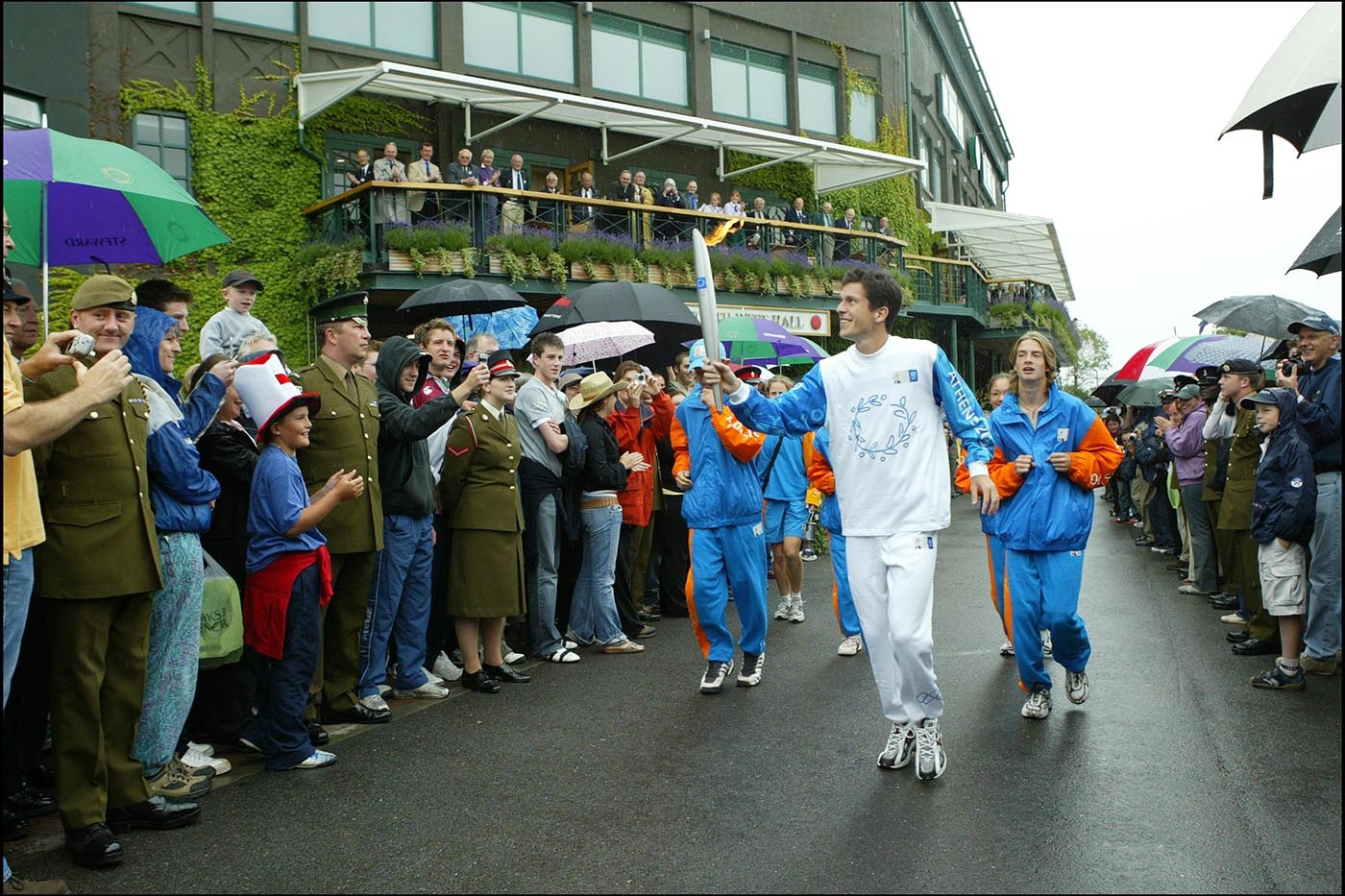In this year of the Paris Games, there has been much talk of players’ ambitions (or retirement plans) on the clay courts of Roland-Garros between July 27 and August 4, but the symbolic flicker of Olympic glory has its own associations with The All England Club - and not just the glorious, nation-stirring achievement of Andy Murray winning the gold medal on Centre Court during London 2012.
In 2004, eight years before Team GB's Murray's incredible defeat of Roger Federer
representing Switzerland, the Eternal Flame passed through the All England Club on
the middle Saturday of the famous grass-court Grand Slam tournament, launching the
London stage of the 2004 Athens Olympic Torch Relay.
It certainly added a frisson to the day of The Championships more recently celebrated as Super Saturday, a day on which the Royal Box guest list reflects high achievers across all sports.
"The Olympics represent the pinnacle of sporting endeavour and it is an honour for The Championships to have been selected as the start point for the Torch relay," Christopher Gorringe, Chief Executive of the All England Club, said at the time.
The Flame is a particularly emotive sight as it represents something that cannot be
extinguished: a sense of looking forward and hopefulness.
Before every Winter and Summer Games, the ritual is the same: a torch is lit amid the ruins of the temple of Hera in the shadow of Mount Kronos, close to the stadium that for a thousand years hosted the ancient Games in Greece.
To ensure as many people as possible around the world have the chance to see and be inspired by it, Olympic Torch Relays involve an extraordinary amount of logistical planning.
(The confirmed route for the 70-day London 2012 relay aimed to take the Flame within
10 miles, or an hour’s journey, of the vast majority of people in the country and
was the result of two years’ planning and consultation.)
In 2004, the flame arrived in a silver lantern on board a chartered 747 from Paris. Sir Roger Bannister, the first man to run a mile in under four minutes, lit his torch from the lantern.
The plan was for him to parade it around Centre Court, then pass the torch to Tim Henman who, in turn, would entrust it to the 1977 Wimbledon champion Virginia Wade.
But, in typical Wimbledon fashion, the weather overshadowed the spectacle (this being
before the installation of Centre Court’s retractable roof) and Sir Roger, 75, had
to carry the torch through the Clubhouse rather than parade it around the perimeter
of Centre Court.
He then handed it on to a track-suited Henman and the flame set off on its eight-hour, 31-mile odyssey, by foot, taxi, bus and wheelchair through south and east London and the West End.
It was finally delivered to Buckingham Palace by five-time gold medallist Sir Steve Redgrave.
The Eternal Flame worked its magic in London, one of the 34 cities across the world
taking part in the Torch relay for the 2004 Athens Games. And Wimbledon played a key
part in conjuring the timeless spirit of peace, unity and friendship.
"As one of the world’s most instantly recognisable sporting icons, The All England Lawn Tennis Club at Wimbledon is the ideal start point for the London stage of the Olympic Torch relay," said Mayor of London, Ken Livingstone.
"To have the event right in the middle of the tennis championship is an extra bonus.
The Torch relay is the ideal opportunity for London and Londoners to share in the
spirit of the Olympics and will be a great day across the city."



